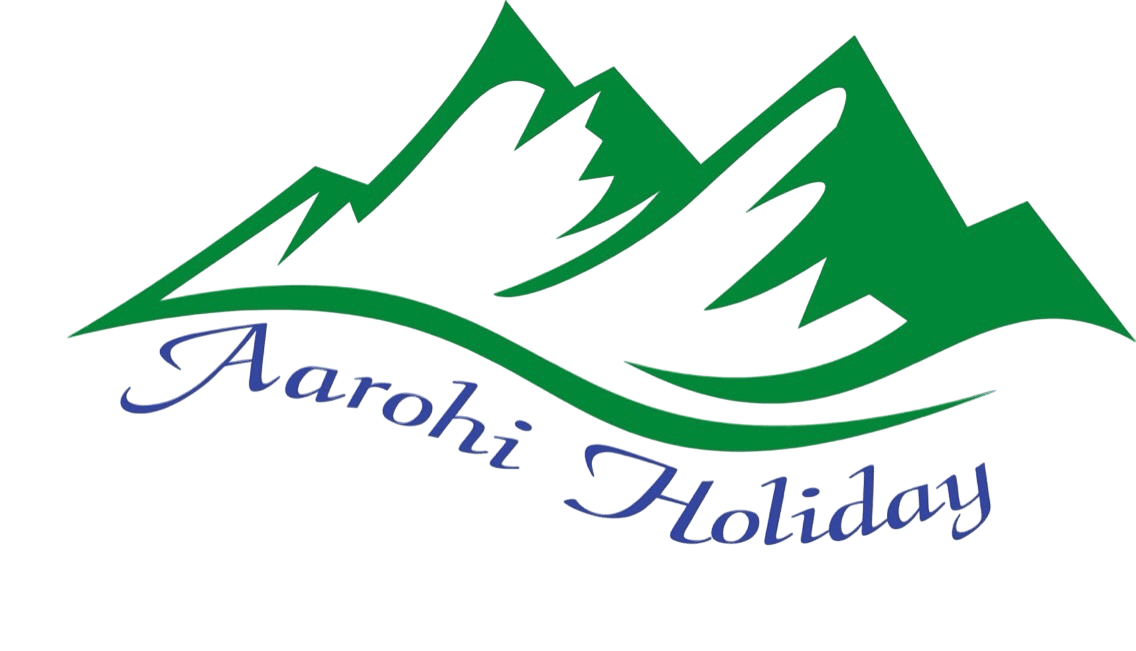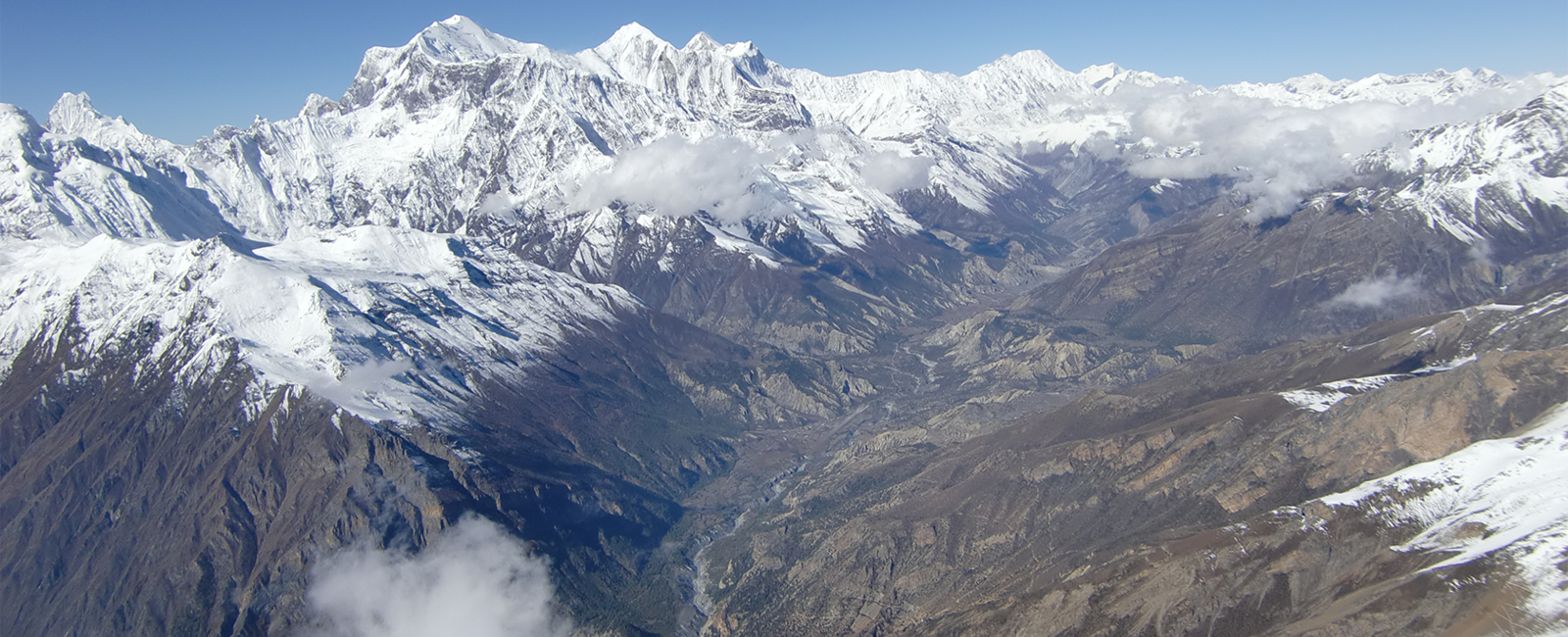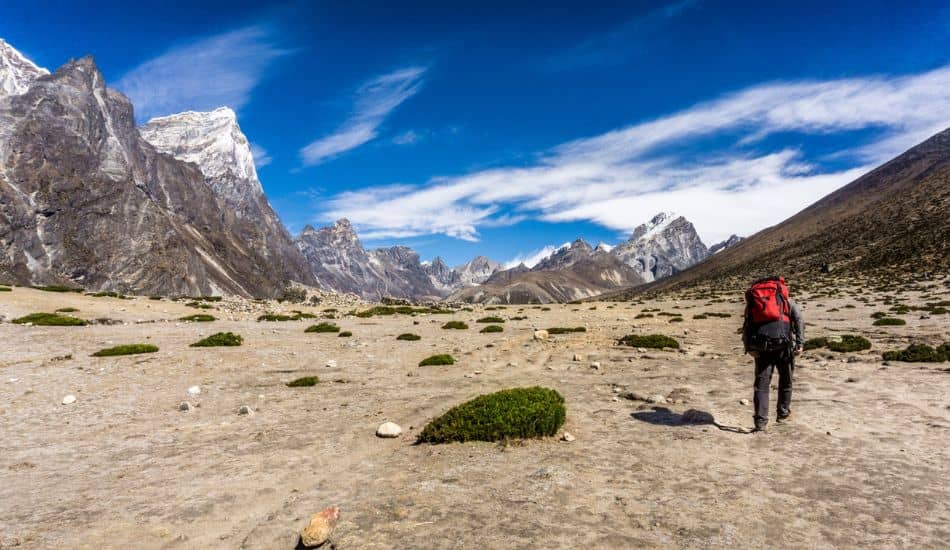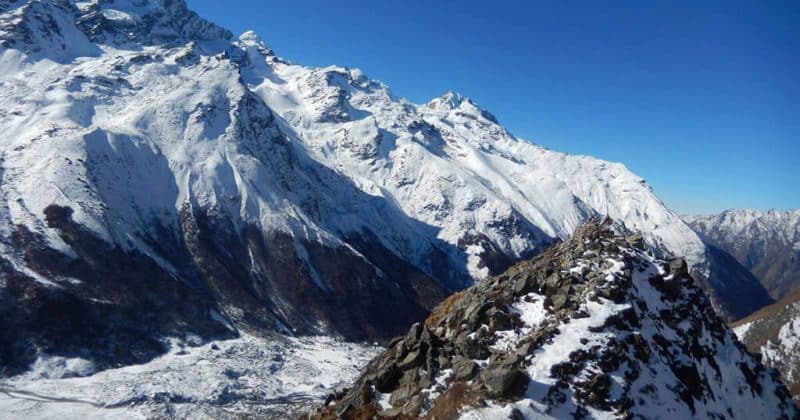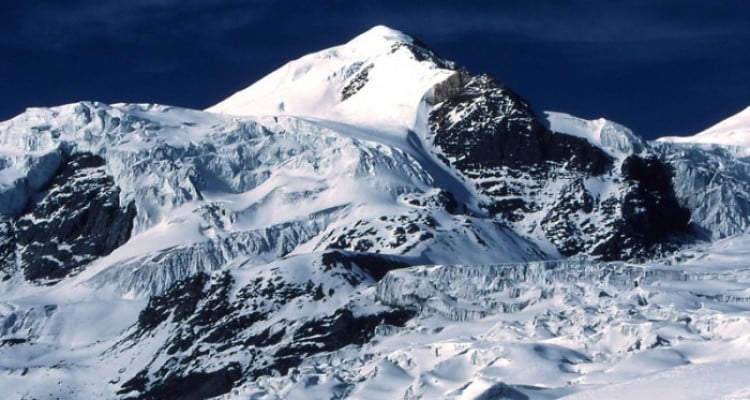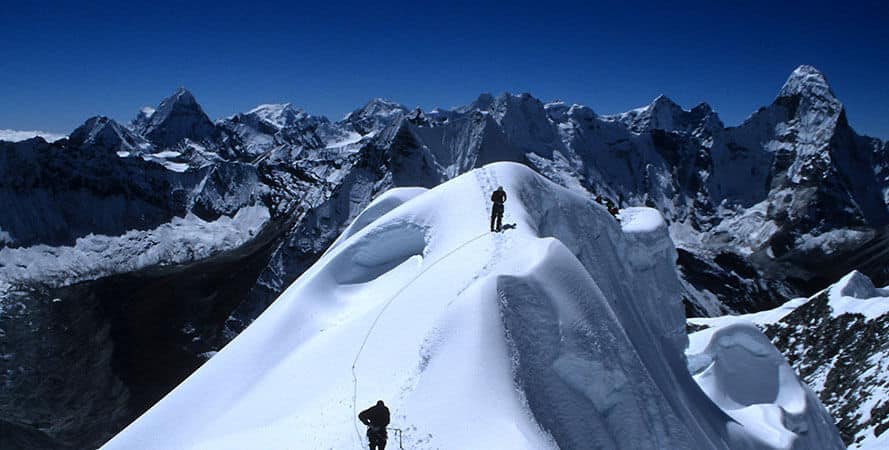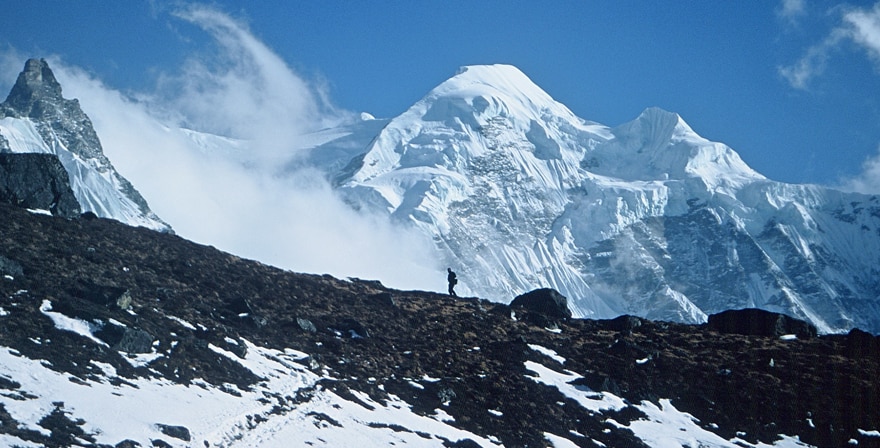Accommodation during Pisang Peak Climbing
- In Kathmandu and Pokhara we provide comfortable accommodation in 3-star hotels with breakfast on a twin-sharing basis.(Private room accommodation can be arrange at an extra cost)
- During the trek, we provide comfortable teahouse accommodation on a twin-sharing basis. Hot showers, Wi-Fi, and device charging are available at an additional cost.
- During the Climbing we provide high-quality alpine tents with all necessary camping gear.
Meals and Drinking water on Pisang Peak Climbing
During the Pisang Peak Climbing journey, you will be served three meals a day: breakfast, lunch, and dinner. On the trekking route, meals are provided in local teahouses, while on climbing days our crew prepares fresh and simple camping meals. Typical food includes dal bhat, Tibetan bread, momos, noodles, fried rice, soups, pasta, pancakes, and eggs. These meals are basic but filling, giving you the energy needed for trekking and climbing.
At Pisang Peak Base Camp, hot meals are freshly prepared by our climbing crew using quality ingredients to keep you well-nourished at higher altitudes.
Staying hydrated is very important during the climb. Bottled water can be purchased at teahouses, but we encourage carrying a refillable bottle to help reduce plastic waste. Our guides provide purification tablets or drops, ensuring you always have safe drinking water throughout the trek and climb. Eating well and drinking plenty of water will support your acclimatization and overall comfort during the adventure.
Required Permits for the Pisang Peak Climbing
For the Pisang Peak Climb, you will need several permits, but you don’t have to worry about arranging them yourself. All permit fees are included in our package, and we take care of the paperwork so you can focus on preparing for the climb.
- Pisang Peak Climbing Permit: USD 250 per person (spring), USD 125 per person (autumn), USD 70 per person (winter and summer)
- Annapurna Conservation Area Permit (ACAP): NPR 3,000 per person
- TIMS Card: NPR 1,000 per person
Best Time for isang Peak Climbing
We recommend climbing Pisang Peak during spring (March to May) and autumn (September to November) for the best experience. These seasons provide stable weather, clear skies, and breathtaking mountain views.
Spring offers warmer days and colorful rhododendron blooms along the trekking route, making it a very popular time for climbers. Autumn comes after the monsoon, bringing crisp air, excellent visibility, and fewer weather-related risks.
Winter climbs (December to February) are possible for experienced climbers, but the cold temperatures and heavy snowfall require extra preparation. The monsoon season (June to August) is not recommended, as rain often causes poor trail conditions and limited visibility.
Pisang Peak Climbing Difficulties
Pisang Peak is a trekking peak, but it is not an easy climb. At 6,091 meters, it requires good physical fitness, previous trekking experience, and strong determination. The route includes steep ascents, rocky ridges, and sections where ropes, crampons, and an ice axe may be needed.
The high altitude, cold weather, and long trekking days of 6 to 7 hours with a backpack add to the challenge. Altitude sickness can also be a concern above 5,000 meters. With proper acclimatization, rest days, hydration, and expert guidance from Aarohi Holiday, the climb becomes a safe and achievable adventure for fit and prepared climbers.
Altitude Sickness and Prevention on the Pisang Peak Climbing
Your safety and health are the top priorities during Pisang Peak Climbing. Aarohi Holiday’s guides are trained in high-altitude first aid and carefully monitor climbers for any signs of Acute Mountain Sickness (AMS). The itinerary includes acclimatization days at Manang and Thorong Phedi to help your body adjust to the altitude.
If symptoms of AMS appear, the team takes immediate action. This may include additional rest, descending to a lower altitude, or arranging an emergency evacuation if necessary. With careful pacing, proper hydration, and the guidance of experienced Aarohi Holiday guides, you will be well-prepared for a safe and rewarding climb.
Travel Insurance for Pisang Peak Climbing
We strongly recommend that all climbers have comprehensive travel and medical insurance before attempting Pisang Peak. The climb takes you into high-altitude terrain and remote areas where medical facilities are limited and emergency services can be difficult to access. Having proper insurance ensures you are protected in case of unexpected situations during the journey.
Your insurance should specifically cover high-altitude climbing up to at least 6,100 meters. It must include personal injury, accidents, medical treatment, and emergency evacuation, including helicopter rescue if needed. With the right insurance in place, you can approach the climb with confidence, knowing you are protected and supported by Aarohi Holiday throughout the adventure.
Your insurance should specifically cover high-altitude climbing up to at least 6,100 meters. It must include personal injury, accidents, medical treatment, and emergency evacuation, including helicopter rescue if needed. With the right insurance in place, you can approach the climb with confidence, knowing you are protected and supported by Aarohi Holiday throughout the adventure.
Pisang Peak Climbing Itinerary
Pisang Peak Climbing begins with your arrival at Tribhuvan International Airport in Kathmandu, where Aarohi Holiday provides airport pickup and comfortable accommodation. You will meet our team and fellow trekkers while preparing for the journey ahead. After exploring the cultural and historical sites of the Kathmandu Valley, the adventure continues with a drive to Besisahar and trekking through Bhulbhule, Jagat, Dharapani, and Chame, gradually ascending through traditional villages and scenic landscapes. An acclimatization day at Upper Pisang helps your body adjust to higher altitudes before continuing to Pisang Peak Base Camp and High Camp for the summit attempt.
Summit day reaches 6,091 meters, offering panoramic views of the Annapurna and Manaslu ranges, before returning to Base Camp. After the climb, the route continues through Manang Valley, Yak Kharka, Thorong Phedi, and over the Thorong-La Pass to Muktinath. The trek descends via Kagbeni to Jomsom, followed by a morning flight to Pokhara and a drive back to Kathmandu for final departure. This 20-day journey combines high-altitude trekking with a challenging climb, offering breathtaking Himalayan scenery and a truly memorable adventure with Aarohi Holiday.
Pisang Peak Climbing Cost
The cost for Pisang Peak Climbing is USD 2,550 per person, which covers all essential services from Kathmandu to Kathmandu. This includes transportation, permits, accommodations, meals during the trek and climb, climbing gear, and the full support of an experienced guide and crew.
The price is based on a minimum of 2 participants. For larger groups, we offers a 5% to 10% group discount, and one group leader can join free of cost. This package ensures a safe, well-organized, and fully supported climbing experience in the Annapurna region.
Important Notes for Pisang Peak Climbing
- Transportation from Kathmandu to Besisahar is included, and the trek begins from there. A private jeep option is available on request for an additional cost.
- We will arrange alternative overland transportation in case of flight delays.
- Porters can carry up to 20 kg, but we recommend keeping your pack under 10 kg as one porter is shared between two trekkers. A duffle bag for your gear will be provided.
- Meals are included during the trek and climb. Hot showers and device charging at teahouses may be available for an additional cost.
- Meals and sightseeing entry fees in Kathmandu are not included in the package.
- All necessary permits for Pisang Peak and the Annapurna Conservation Area are included and arranged by Aarohi Holiday.
- Drones require special permits that are difficult to obtain, so bringing one is not advised.
Fitness Preparation for the Climbing
Pisang Peak Climbing is a challenging adventure that demands solid physical fitness and stamina. The climb reaches above 6,000 meters and combines long trekking days with technical climbing at high altitude. To prepare, we recommend regular walking, uphill or stair climbing, and cardio exercises such as running, cycling, or swimming. Strength training focused on your legs, core, and upper body will also support your performance. With consistent preparation and the support of our experienced team, most healthy and motivated climbers can achieve the summit of Pisang Peak.
A Typical Day on the Trail
A typical day on the Pisang Peak Climbing journey involves 5 to 7 hours of trekking through diverse terrain, including stone-paved paths, forested trails, and high-altitude landscapes. Your morning begins with a hearty breakfast before setting out on the trail, passing through Gurung and Manangi villages, pine and rhododendron forests, and glacial valleys. Trekking days bring gradual elevation gain, while climbing days are more demanding as you make your way toward base camp and high camp.
On summit day, you will start before dawn, using ropes, crampons, and an ice axe to climb steep snow and ice sections up to 6,091 meters. Rest stops and a lunch break help keep you energized while you take in breathtaking views of Annapurna, Manaslu, Gangapurna, and the distant peaks of the Himalayas. Each day blends trekking, acclimatization, and climbing, offering both cultural encounters and the challenge of a Himalayan summit.
Arrival Instruction
Upon your arrival at Tribhuvan International Airport, our company representatives are stationed to welcome you to the country. We request you to carefully look for your name being held by our representatives following the events upon landing. The representatives are responsible to escort you to your hotel in Kathmandu. You will see men offering you to carry luggage and take you to your destination as you exit the airport. We request you pay no attention to these people and follow the designated representatives and follow their instructions. You will also need to keep an eye on your luggage and belongings to avoid any complications.
Nepal Visa Entry Procedure
For entry into Nepal, there are visa requirements everyone (except Indian nationals) must complete before being allowed to pass through immigration. This is for air travel as well as overland transportation. Most visitors may obtain a visa to enter Nepal, however, there are exceptions. Three options are available for entry
- 15-day single entry: US $30
- 30-day single entry: US $50
- 90-day multiple entries: US $125
Please have a passport valid for at least 6 months from the time of entry, and have cash ready, preferably in US dollars, though there are other currencies Nepal Immigration accepts. If you are entering via overland, you must have US cash and 3 passport photos. For arrival by air, the kiosks at the airport take your picture for you.For the most up to date list of exceptions for visa on arrival or to obtain the most current visa information, visit the Nepal Department of Immigration website.

